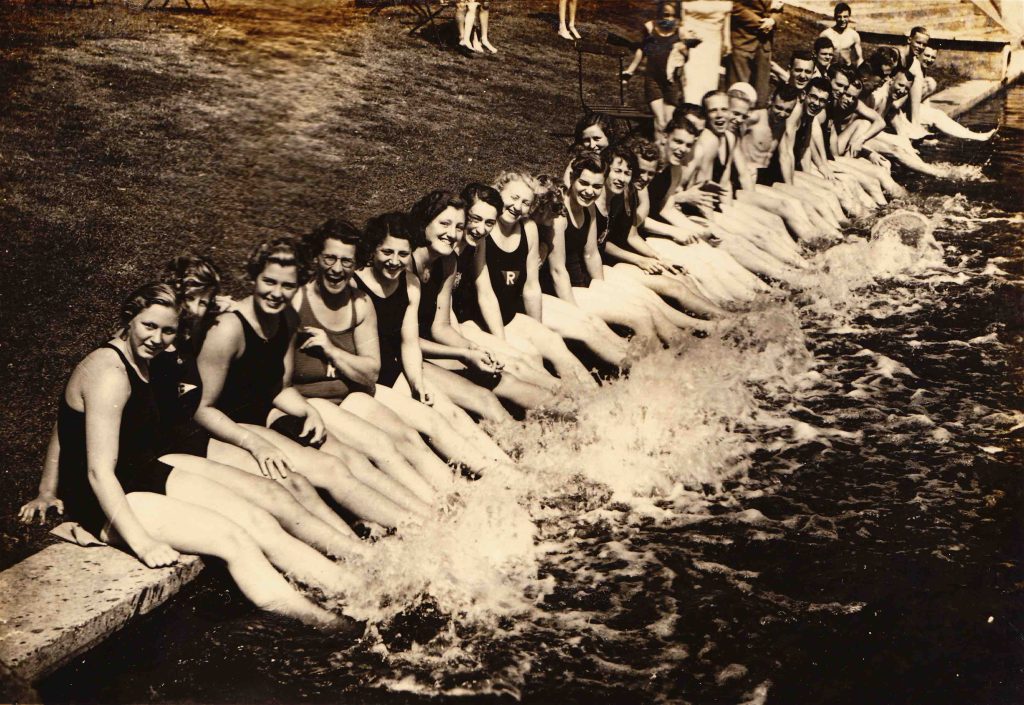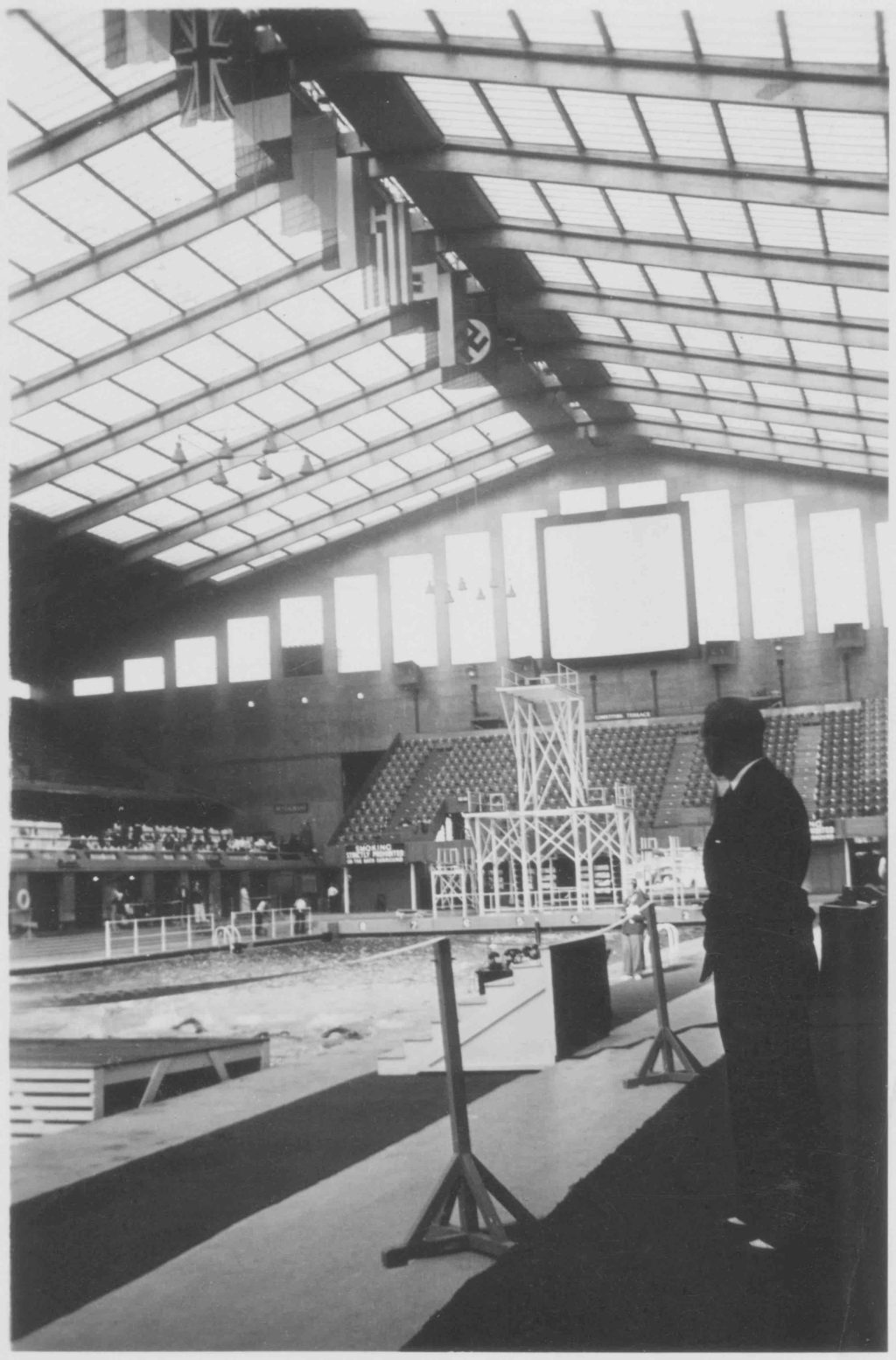OTD in early British television: 9 August 1938

John Wyver writes: Monday 9 August 1938 was the first day of the BBC’s mobile control unit being at the Empire Pool, Wembley (now Wembley Arena) for the European Swimming Championships. Two afternoon visits continued each day throughout the week, with Olympic champion sprinter Harold Abrahams as one of the main commentators.
On this first day viewers saw 100m backstroke heats and a water polo match between Germany and Belgium; later in the week there was lots of diving (presumably relatively easy to capture on camera), more races, and several further water polo contests. Great Britain ended up fifth in the medals table, with Betty Slade bringing home our sole gold in the 3 metre springboard competition. Hungary won the men’s water polo.
As can be seen from the photograph below, taken on the first day of the championsips by the Lithuanian swimmer and diver Valentinas Vaškelis, the pool had extensive natural light provided by its glass roof, and it was this that permitted the slightly relatively insensitive Emitron cameras to function well in a covered space.

The Empire Pool, which opened in July 1934, was built for the 1934 British Empire Games by British entrepreneur Arthur Elvin. As Wikipedia further details:
The building was designed by the engineer Sir Owen Williams, without the employment of an architect. Williams built a unique structure, with cantilevers meeting in the middle, thus avoiding the need for internal pillars. He also used high quality concrete, meaning that it has aged far better than many more recent concrete buildings.
The building had a reinforced concrete frame of three hinged arches spanning 240 feet (73 m), which was the largest concrete span of any similar structure in the world at that time.
A preview note in Television described the disposition of the cameras:
Two television cameras will be mounted on the concrete side of the bath to give an overhead view only ten feet from the water; one of them at the starting and finishing post and the other at the diving boards at the opposite end. A third camera mounted high up at the end of the pool will give a general view.
The day after television’s first visit to the championships a short report in the Daily Telegraph was almost poetic in its enthusiasm:
Swimming races being relatively slow, can be easily followed by the television camera. The water, sparkling with highlights and threshed into foam by the flying arms of the competitors, made a fine, cooling picture. Viewers could keep pace with the swimmers all down the pool, see them turn in close-up, and then follow them back to the finishing post.
Header image: ‘The Dutch swimming elite at the 1938 European Championships in London. Among them are Jopie Waalberg (third from left), Iet van Feggelen (sixth), and Cor Kint (seventh). On the far right are our swimmers and the water polo team.
[OTD post no. 235; part of a long-running series leading up to the publication on 8 January 2026 of my book Magic Rays of Light: The Early Years of Television in Britain, which can now be pre-ordered from Bloomsbury here.]
For more on Arthur Elvin and Wembley, see Paul Hayes’ BBC Sport post ‘The Man who Saved Wembley Stadium
https://www.bbc.com/sport/football/articles/cg71ger3zllo
which is linked to the BBC Norfolk podcast available on BBC Sounds:
https://www.bbc.co.uk/sounds/play/p0l8zgdq